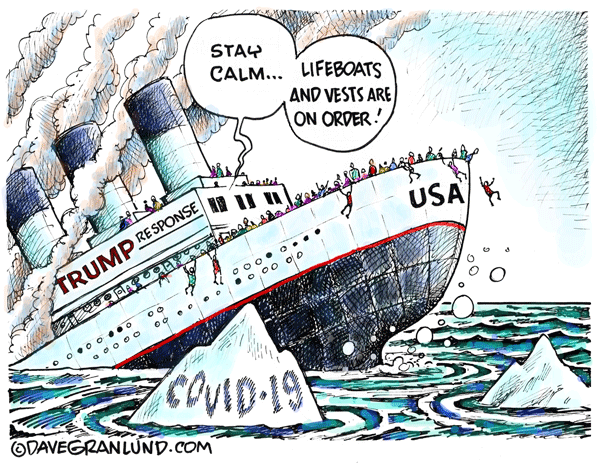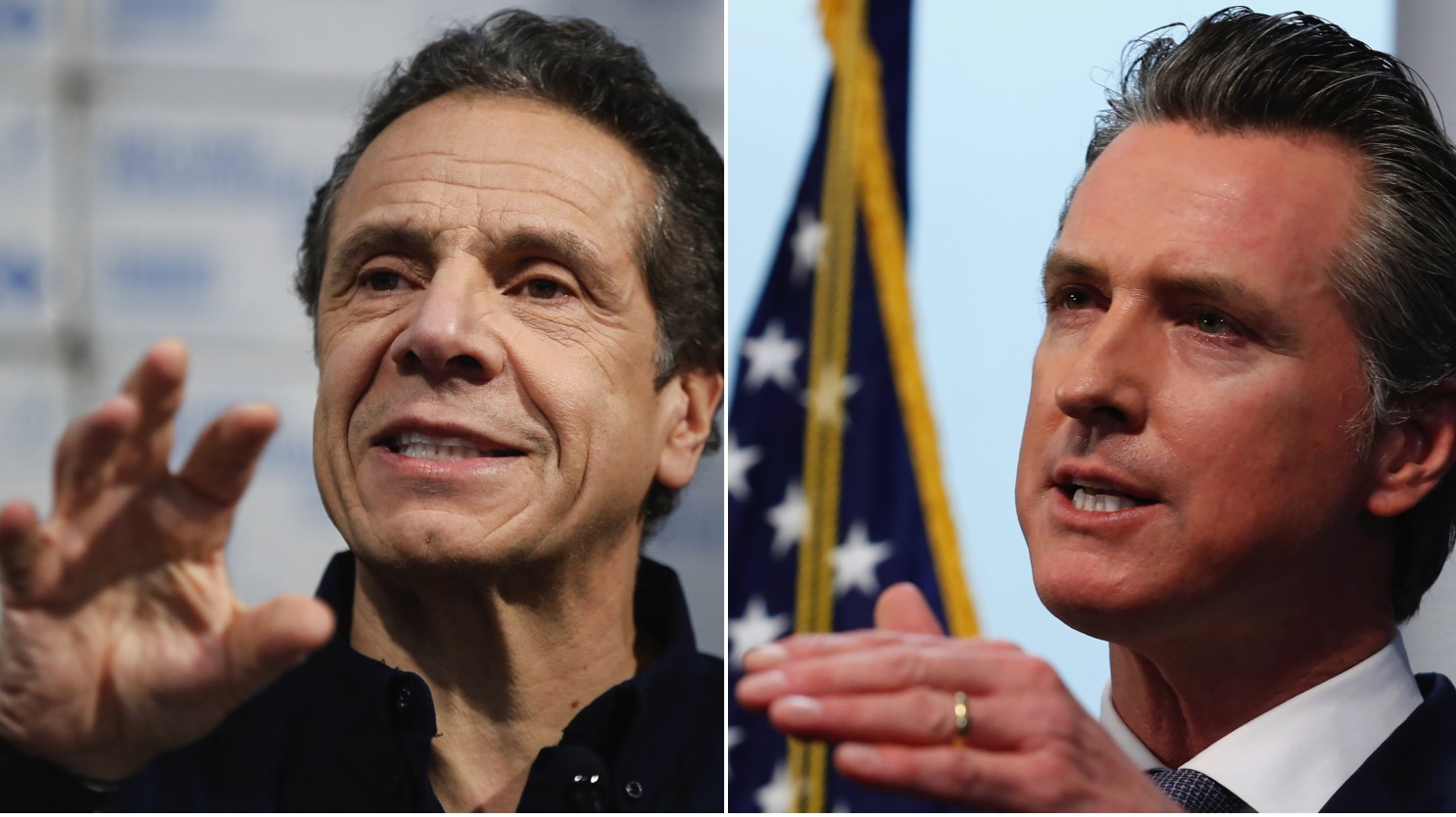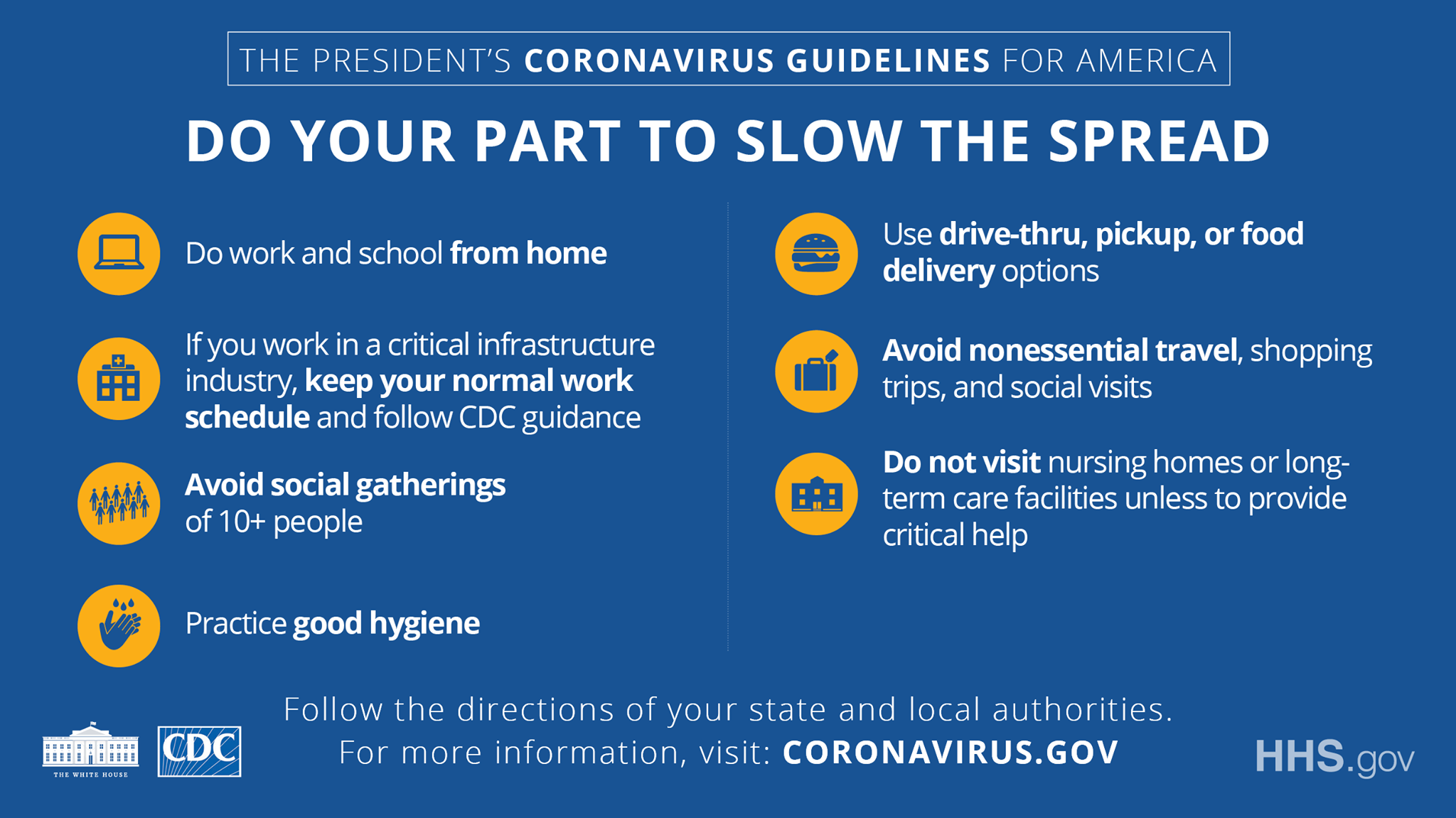
From day 1 of American democracy, the idea of states’ rights has been a source of constitutional debate, tension, racism, and finally war. Now for the first time in American history the greatest threat to the United States, states’ rights, has become the greatest safeguard to the United States.

Unfortunately for the 100,000 plus Americans who are now infected with the Covid-19 coronavirus President Trump didn’t take the virus seriously
Before there was the United States there were 13 territories that operated as 13 colonies under British rule. To gain independence from England the 13 decided to join together under a Constitution creating the country of the United States and a government to fight, defeat, and remove the British government.
The Supremacy Clause of the Constitution of the United States, Article VI, Clause 2, establishes that federal laws are the “supreme Law of the Land”, and thus take priority over any conflicting state laws. It states specifically that all state constitutions and state courts are subordinate to the federal “supreme law.” This clause was necessary because before the states joined together to create the United States each state functioned independently with its own set of laws.

Because the federal government did not respond to early warnings, an outbreak of the coronavirus among only 6 people turned into a pandemic among many people that’s now killing thousands of Americans
Each of the 50 states has a state government that looks and acts like the federal government. The federal government has a President as its head of state with broad executive authority, each state government has a Governor as its head of state with equal or similar executive authority within the state that the President has within America. The federal government has a House of Representatives and a Senate which make the federal laws of America, each state has a state House of Representatives and a state Senate which makes laws for the state.
Since the U.S. Constitution makes it clear that states are subordinate to the federal government, the suggestion of state rights can be a controversial subject. Traditionally in America state rights have been asserted when someone or some institution is attempting to restrict the rights or activities of someone or some institution. The most egregious example of this was the 11 states that thought states’ rights entitled them to withdraw from the union of the United States, and start a Civil War to defend states’ rights to enslave American blacks.

Donald Trump is the first president in American history to declare that he nor the federal government would not take responsibility in a time of national crisis
And the worst example of states’ rights law after the Civil Rights Movement was the 1996 Defense of Marriage Act (DOMA), a federal law that allowed states the right to discriminate and not legally recognize marriage between people of the same sex. Fortunately for the equality of all Americans in 2013, the U.S. Supreme Court ruled in United States v. Windsor that DOMA was unconstitutional. Now once again states are resisting being subordinate to the federal government by exercising their own states’ rights. But this time instead of the exercise of states’ rights being unhealthy for American democracy it literally protects the health of all American citizens.
In 2018 the federal government disbanded the pandemic unit of the National Security Council. It was established to prepare the United States for preventing a health emergency like the coronavirus pandemic. “Eliminating the office has contributed to the federal government’s sluggish domestic response,” according to Beth Cameron a former senior director of the office.

In January U.S. intelligence reports predicted the coronavirus would spread to the United States, a memo from a top White House advisor warned: “The lack of immune protection or an existing cure or vaccine would leave Americans defenseless in the case of a full-blown coronavirus outbreak on U.S. soil,” this lack of protection elevates the risk of the coronavirus evolving into a full-blown pandemic, imperiling the lives of millions of Americans,” and Health and Human Services Secretary, Alex M. Azar II, directly warned President Trump of the possibility of a pandemic during a call on Jan. 30, this was the second warning he had given him about the virus in two weeks. President Trump thought Azar was being an alarmist. He chose to ignore both Azar and the January intelligence reports that suggested he start considering options like keeping Americans home from work and shutting down cities.
At the time of these warnings, there was an outbreak of 6 diagnosed cases of the coronavirus in the United States. The federal government’s response to the virus warnings was to announce that all non-Americans traveling from China would be denied entry into the U.S. Over a month later by the time health officials were finally able to convince President Trump to issue national guidelines to control the coronavirus, it was too late the outbreak of 6 cases and grown to a pandemic of thousands of cases.

For the 1st time in American war history governors have replaced the President as the commanders-in-chief. California Gov. Gavin Newsom (left) fired the 1st shot in the coronavirus war. He was the 1st governor in America to shutdown his state and achieve victory, as a result California is able to supply other states with ventilator ammunition for their battles. New York Gov. Andrew Cuomo followed him and shutdown his state, he is now leading the coordination and strategy of shutdown governors on when the states should end the shutdowns.
Seeing the dangerous disease spreading response by the federal government, several state governments led by California decided not to follow the federal government but to lead it. 30 states and the District of Columbia decided to exercise states’ rights by issuing orders President Trump refused too, a stay-at-home order for all individuals and a shutdown order of all non-essential businesses. Stay-at-home orders and shutting down non-essential businesses were not the only defensive steps President Trump refused to let the federal government take. He also refused to enforce the Defense Production Act. It could force U.S. businesses to produce and reduce the life-threatening shortages of ventilators and face masks desperately needed by states to fight the virus.

Fortunately most states in America did not follow the federal government’s lead in how they responded to the coronavirus, had they done so millions would have died
President Trump’s refusals to act have shrunk the traditional leadership role the federal government and the President have always played during a national crisis. Under President Trump, the most powerful leadership position in the world, President of the United States, has become the incredible shrinking presidency. During a conference call to coordinate the coronavirus defense, he told the nation’s Governors: “Respirators, ventilators, all of the equipment try getting it yourselves, we will be backing you, but try getting it yourselves. Point of sales, much better, much more direct if you can get it yourself.” In other words, states you are on your own. Fend for yourself. The federal government will not use its leverage to stop states from having to pay inflated prices for supplies. Nor will it stop states from having to bid against each other for any tools or equipment needed to fight the coronavirus.
Because the states have exercised states’ rights and implemented their own independent stay-at-home and business shutdown orders, the spread of the coronavirus in America has begun to slow down significantly all over the United States. Slowing the spread of the virus has enabled states to help each other avoid life-threatening shortages of medical equipment. For instance, after California exercised states’ rights to implement its own stay-at-home/shutdown order, the spread of the coronavirus in California slowed to the point that they were able to lend America’s coronavirus hot spot, the state of New York, 500 ventilators that California is no longer projected to need. The state of Oregon is also lending 140 ventilators to New York because as Gov. Kate Brown said, Oregon was “in a better position” with its coronavirus cases after exercising its states’ rights.

6 WEEKS after the 1st coronavirus warnings and long after the states started the war against the coronavirus, the federal government finally fired a shot in the war by issuing it own war guidelines.
Without states’ rights leadership, the coronavirus pandemic could have spread like wildfire and killed as many as 2.2 million people in the U.S., according to a report from the Imperial College of London Covid-19 Response Team. Fortunately, because most states have governors who acted independently of President Trump and the federal government by implementing stay-at-home and business shutdown orders on their own, millions of Americans are no longer projected to die. Meaning for the first time in American history a state defying federal guidance and exercising states’ rights is a healthy humane thing and not a restrictive, racist, or hateful thing.




Leave a Reply